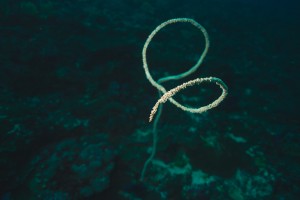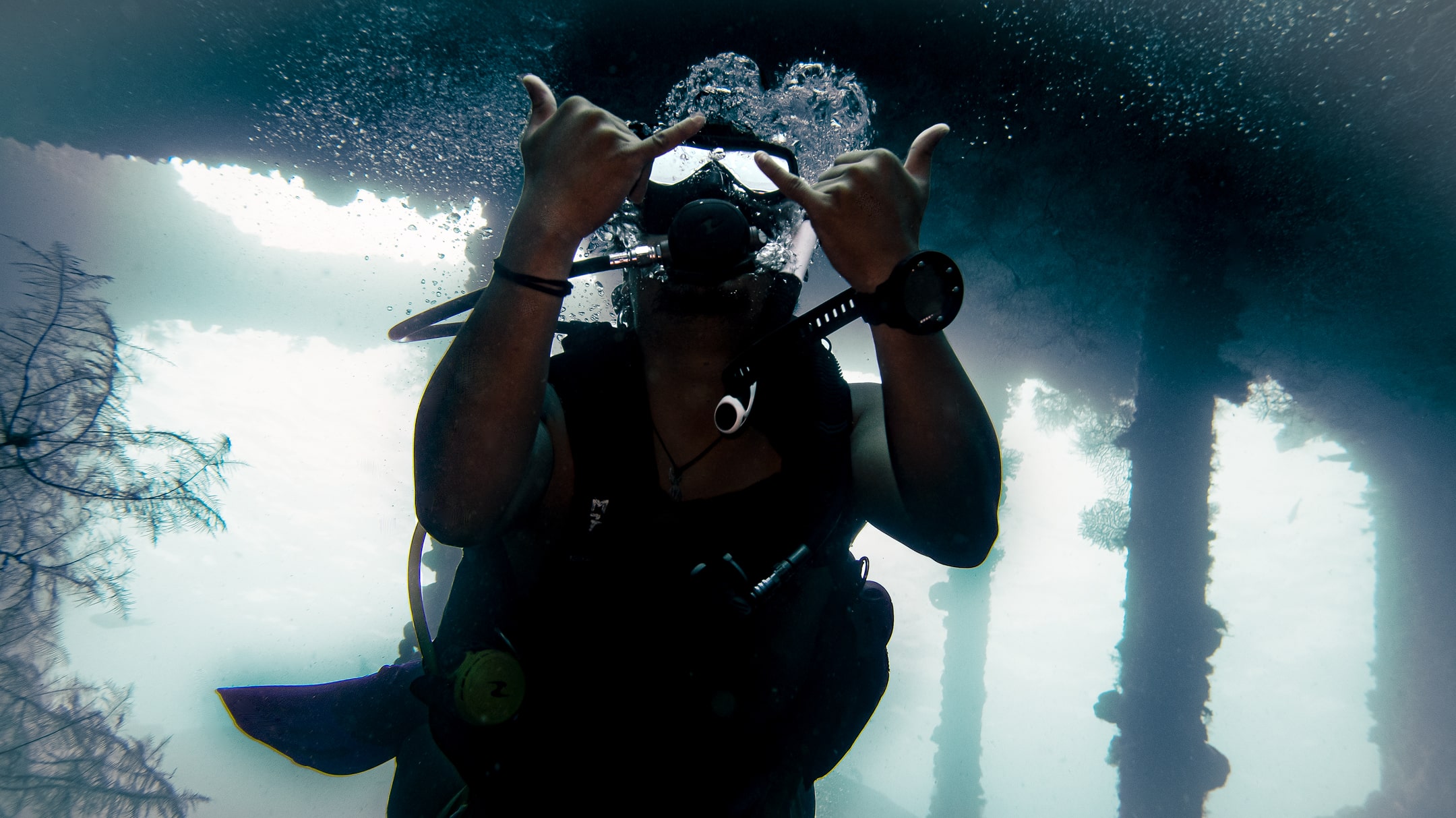PADI certification allows you to dive beneath the surface of the water – 18m (60ft) if you have your Open Water certification. Advanced Open Water (AOW) divers can go to depths of 30m (80ft) after gaining some experience with different types of dives and directives. These depth limits have been established from years of experience, helping ensure that divers are not exposed to unnecessary hazards. One of PADI’s most interesting specialties is the Deep Diver specialty. It adds an extra 10m onto AOW certification, making a maximum depth of 40m (130ft). That’s thirteen storeys!
Here are some outlines for the types of things to expect if you’re thinking about getting your PADI Deep Diver Specialty.

Dark & Cold
One of the first things you might notice about deeper depths is the water gets darker and colder the deeper you go. Depending on the visibility, a deep dive could feel like a night dive and you might suddenly feel like you’re wearing inadequate exposure protection. A 3mm short wetsuit might suffice at 5m where it’s 29°C, but might feel a little chilly at depth at 24°C. Consider wearing a hood or a longer or thicker wetsuit than you might have originally, to help deal with the cold temperatures. It is also wise to carry a flashlight, should you find yourself in a dark environment.
Narcosis
After 30m, in addition to the dark and cold conditions, the effects of Nitrogen Narcosis become apparent in some divers. Nitrogen narcosis effects everyone a little differently – some divers experience it quite noticeably around 35m, and some almost not at all, even at 40m.
Nitrogen narcosis can have a number of different effects on divers. These include delayed responses to stimuli, impaired judgement, and an overly-positive outlook and feeling of confidence. Laughter and anxiety are also seen in some divers. These symptoms are not dangerous in themselves, but can easily combine with other factors to produce serious hazards.
If you encounter a low-on-air situation, impairments from narcosis could cause a dangerous misjudgment and lead you to exhaust your air supply without proper steps to remedy the situation. This leads to the next and most important point regarding deep diving: air consumption.
Air consumption
Due to the effects of increasing atmospheric pressure past 30m (4-5 atm), every breath taken at 40m is worth up to five breaths on the surface. A tank that lasts you an hour at an average depth of 15m will last you less than half of that at 40m.
In addition to an increased rate of consumption at depth, you also need to account for your ascent time and any safety stops to be made. If you exhaust two thirds of your tank in six minutes spent at depth, you won’t have enough air for a 45-mintue dive.
The extensive list of ways you can run out of air is why scuba courses focus so heavily on training for low-on-air, out-of-air and air-sharing situations, but the best solution for this is prevention.
Weight and equipment
When you plan to use a large portion of the air in your tank(s), the tanks may lighten up significantly over the course of the dive. This means without enough weight, you might have trouble staying at depth at the end of your dive. You might have to take an extra weight to allow you to control buoyancy during your safety stop. Typically, however, if you are properly weighted for the end of a dive and are careful with your breathing, buoyancy is still easily managed.
You also might have to take a pony bottle (an additional small air tank, typically 6L) with its own independent first and second stage regulators, to provide you with some options in the case of air depletion or regulator failure.
Emergency preparation
You cannot dive deep and add risk without also ensuring an equally increased level of safety. When diving deep, you must ensure O2 is available and ready on the surface nearby, and that you and your buddy are familiar with emergency procedures including immediate transfer to professional medical care.
The PADI Deep Diver is just one of many specialties we offer. You can learn this and more, and expand your diving horizons to 40m, opening the door to new species, locations and experiences! Book your deep specialty today!



